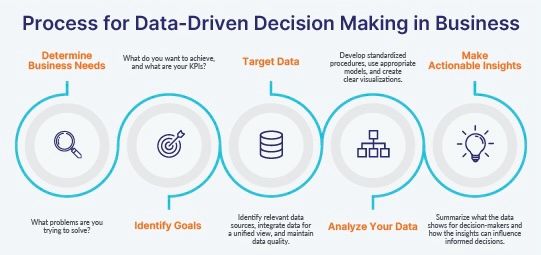Understanding the Core Difference
In today’s data-driven world, organizations rely on analytics to make informed decisions. Descriptive and Predictive Analytics are two fundamental approaches that serve distinct purposes in the analytics lifecycle.
- Descriptive Analytics focuses on understanding what has happened in the past using historical data.
- Predictive Analytics, on the other hand, aims to forecast what is likely to happen in the future by applying statistical models and machine learning techniques.
Both types complement each other — while descriptive analytics provides insights, predictive analytics transforms those insights into foresight.
What Is Descriptive Analytics?
Descriptive analytics interprets historical data to identify patterns, trends, and relationships. It answers the question:
👉 “What happened and why?”
Common Techniques Include:
- Data aggregation and visualization
- Statistical summaries
- Trend analysis and performance reports
For example, a retail company might use descriptive analytics to evaluate last quarter’s sales by region or product category.
Key takeaway: Descriptive analytics is retrospective — it helps businesses understand the past to improve future decision-making.
What Is Predictive Analytics?
Predictive analytics uses historical data, machine learning, and AI models to anticipate future outcomes. It answers:
👉 “What will happen next?”
Popular Predictive Techniques:
- Regression analysis
- Decision trees
- Neural networks and forecasting algorithms
For instance, an e-commerce company can use predictive analytics to forecast which customers are likely to churn or what products will be in high demand next season.
Predictive models empower decision-makers to act proactively instead of reactively.
Key Differences Between Descriptive and Predictive Analytics
| Aspect | Descriptive Analytics | Predictive Analytics |
|---|---|---|
| Purpose | Understand past events | Forecast future outcomes |
| Data Focus | Historical data | Historical + real-time data |
| Techniques | Statistical summaries, visualization | Machine learning, AI modeling |
| Business Value | Insight into trends and performance | Anticipation and strategy optimization |
| Question Answered | “What happened?” | “What’s likely to happen?” |
Both are essential for a complete data analytics strategy — descriptive analytics builds a foundation, while predictive analytics drives strategic growth.
The 4 Types of Analytics
- Descriptive Analytics – Explains what happened.
- Diagnostic Analytics – Explains why it happened.
- Predictive Analytics – Forecasts what might happen.
- Prescriptive Analytics – Suggests actions to achieve the best results.
These four stages represent the evolution from data observation to data-driven action.
Why Businesses Need Both
Companies like Singleclic, a leading IT solutions provider since 2013, help organizations integrate both descriptive and predictive analytics into their digital ecosystems. By leveraging tools like ERP, CRM, and AI-driven dashboards, businesses can gain a complete picture — from understanding yesterday’s performance to predicting tomorrow’s opportunities.
Singleclic’s expertise in data analytics, cloud hosting, cybersecurity, and digital transformation ensures businesses make smarter, faster, and more secure decisions.
To explore more about how data analytics powers decision-making, check out this comprehensive article on Data Analytics and Decision Intelligence.
People Also Ask
What is the difference between descriptive and predictive analytics?
Descriptive analytics summarizes historical data, while predictive analytics uses that data to forecast future outcomes.
What is the difference between predictive and descriptive assessment?
A descriptive assessment focuses on current or past performance, whereas a predictive assessment estimates future results based on data models.
What are the 4 types of analytics?
Descriptive, Diagnostic, Predictive, and Prescriptive analytics.
What is the difference between prescriptive and descriptive models?
Descriptive models explain existing data trends; prescriptive models recommend actions to achieve desired outcomes.
Final Thoughts
Both Descriptive and Predictive Analytics are vital for building a resilient, data-driven organization. While descriptive analytics tells the story of your business’s past, predictive analytics writes the next chapter — empowering you to stay ahead of market trends and customer needs.
📞 Contact Singleclic Today:
- Egypt: +2 010 259 99225
- UAE: +971 42 475421
- KSA: +966 58 1106563
🌐 Visit our website to discover how our analytics and decision intelligence solutions can transform your business strategy.









